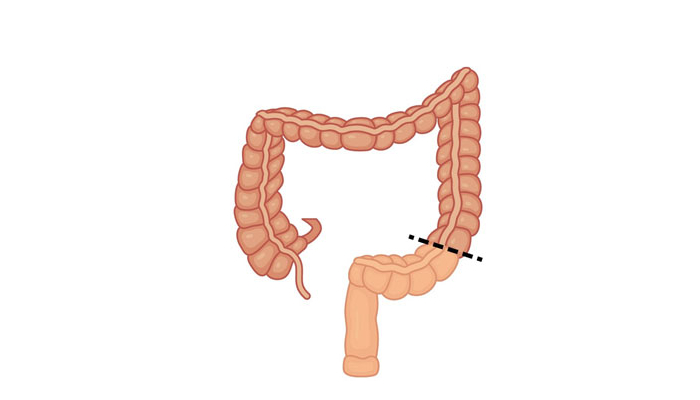What Is Abdominoperineal Resection Surgery?
An abdominoperineal resection (APR) is a surgery in which the anus, rectum and sigmoid colon are removed. This procedure is most often used to treat rectal cancers located very low in the rectum. Often this surgery occurs after you have completed radiation and/or chemotherapy treatments.

How Should I Prepare For Laparoscopic Abdominoperineal Resection?
Your healthcare provider will help you prepare for your abdominoperineal resection. They will talk to you about your medical history and discuss any prescription drugs or supplements you’re taking. You should also tell your healthcare provider if you have sleep apnea. If you use a CPAP device, bring it with you the day of your surgery.
It’s recommended that you don’t smoke or drink alcohol in the weeks leading up to your surgery. These habits can hinder your healing and cause serious complications. It’s important to be honest with your healthcare provider about how much you drink or smoke. They can help you plan ahead for a successful recovery.
How is Abdominoperineal Resection Surgery Performed?
This procedure is performed under general anesthesia at a hospital. Abdominoperineal resection steps include:
- Preparing the sigmoid colon and rectum for removal: Your surgeon will complete several steps before removing the anus, rectum and sigmoid colon. First, the main blood vessels that serve the diseased sections of the bowel are divided. Next, your surgeon frees the sigmoid colon and rectum, then separates the sigmoid colon from the remaining large intestine.
- Preparing the anus for removal: Your surgeon then operates on the area between the legs (perineal region) to remove the anus. The anus, rectum, and sigmoid colon are removed from the body. The skin is sewn closed where the anus used to be located.
- Performing a colostomy: Once the anus and rectum are removed, a permanent colostomy is created. A colostomy involves bringing a portion of the colon (large bowel) to an opening at the surface of the skin. This new opening, called a stoma or colostomy, allows waste to pass out of the body. The stoma usually measures from 1 to 1½ inches in diameter. A pouch, or ostomy bag, is worn to collect gas and stool. This pouch is worn at all times since there is no longer conscious control of waste elimination from the body.
How Long Does Abdominoperineal Resection Surgery Take?
Generally, abdominoperineal resection surgery takes about two to three hours. This timeframe can vary depending on your specific situation.
What Should I Expect During Abdominoperineal Resection Recovery?
Following abdominoperineal resection surgery, most people stay in the hospital for several days. You’ll be fitted with an ostomy pouch immediately after surgery. However, it takes a few days for your digestive system to become active again. Your diet is slowly increased from liquids to solid foods as your intestines start functioning.
While you are recovering in the hospital, your medical team will give you instructions for abdominoperineal resection postoperative care. This includes how to properly care for your stoma and how to change your ostomy bag when you return home from the hospital. Colostomy irrigation may be an option to help regulate bowel movements after the procedure.
What Are The Advantages of Laparoscopic Abdominoperineal Resection Surgery?
There are several benefits to performing this procedure laparoscopically. Compared to traditional open surgery, the laparoscopic technique:
- Requires smaller incisions.
- Reduces pain.
- Decreases the amount of blood loss during the procedure.
- Reduces the risk for postoperative complications.
- Encourages faster healing and recovery.
